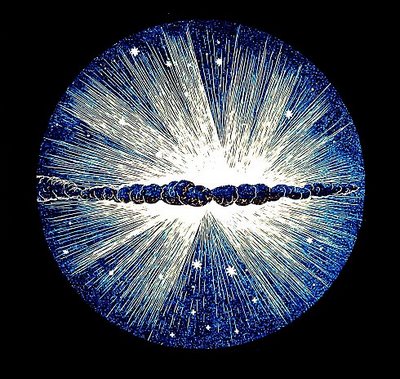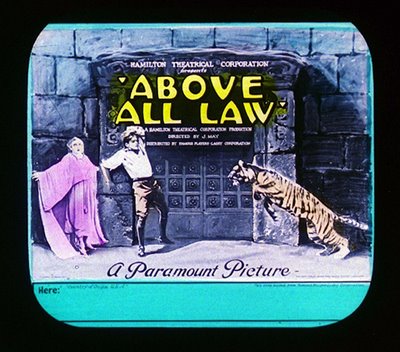
President Bush's creation of the world's largest ocean reserve sounds too good to be true. But it seems to be on the level:
“This an unprecedented win for endangered Hawaiian monk seals, green sea turtles, black-footed albatrosses, tiger sharks, the incredible reef corals in these waters, the people of Hawaii and all Americans, now and in generations to come,” Elliott Norse, president of the Marine Conservation Biology Institute, said in a statement ahead of the announcement. “It’s the start of a new era of protecting places in the sea before they’re degraded beyond recognition. In my opinion, this is the best thing President Bush has done for the environment.”The United States and Russia have apparently reached a deal on securing Russian caches of nuclear, biological, and chemical weapons:
Projects include constructing facilities to lock down nuclear material and warheads; strengthening security at labs storing dangerous biological pathogens; developing special facilities to destroy chemical weapons; and dismantling long-range missiles and bombers.Some skepticism is definitely in order here, but perhaps a bit of cautious optimism is defensible, too.
I don't know what to make of this, but it's absolutely fascinating:
Exposed metal surfaces are highly vulnerable to corrosion, but paint or other protective coatings can interfere with some uses, as well as add significant costs. Now, a comprehensive series of experiments suggests a new form of protection: bacteria....MR-1 is a remarkable organism that can incorporate metal into its metabolism, "inhaling certain metal oxides and compounds in one form, exhaling them in another," according to Kus's presentation. MR-1 has previously been used to precipitate uranium out of contaminated water. And "it can grow almost anywhere and does not cause disease in humans or animals," Kus notes.Scientific American discusses the "greening" of the New York subway system:
These technologies won't just cut the facility's electric bills; they will cut its pollution profile. Combined they will avoid the emission of more than 500 tons of carbon dioxide, along with tons of smog-forming nitrogen oxides and acid rain-causing sulfur dioxide. "By using 100 kilowatts of [photovoltaic] capacity, reduction in carbon dioxide emissions equals the emissions from driving approximately 225,417 miles in an average passenger car," the MTA writes in its detailed description of the site.Toyota has developed a new method for composting manure:
The world's number-two car maker said on Friday it had co-developed a cutting-edge composting ingredient and process that drastically reduce nitrous oxide, methane and other greenhouse gases, as well as offensive odours produced by livestock waste -- part of its efforts to clean the environment.One would like to know just what sort of "ingredient" this is...but it certainly sounds promising.
"We've always wanted to do more in the agricultural field," Yasumori Ihara, a managing officer at Toyota, told a news conference.
Researchers have discovered that night-time airplane flights have a much larger effect on climate than daytime flights:
"We get one-half of the climate effect from one-quarter of the year, from less than one-quarter of the air traffic," said meteorologist Nicola Stuber, who led the English research team. "If you get rid of the night flights, you can reduce the climate warming effect of the contrails."Ideally, airlines will make some scheduling changes. Otherwise, it sounds like it'd be sensible to book daytime flights when you travel.
The city of Modesto, California has won a landmark pollution case against three chemical companies:
A San Francisco jury last week sided with Modesto in the city's quest to make chemical companies pay for soil and water pollution caused by dry-cleaning solvents they manufacture. The jury will decide how much to award the city in punitive damages from three companies that produced the solvents, which have been linked to cancer in people.While we're on the topic of solvents, a company called Stemco is drastically reducing its use of toluene and MEK:
Stemco will eliminate 36,000 pounds of toluene and 18,000 pounds of methyl ethyl ketone from the waste it generates annually. The company also has joined the U.S. Environmental Protection Agency's National Partnership for Environmental Priorities, a voluntary program in which companies pledge to reduce the use or release of 31 priority chemicals beyond the requirements of environmental regulations.The EPA has banned the horrific pesticide Guthion:
Jay Brunner, an entomologist and director of the Tree Fruit Research Center in Wenatchee, said Tuesday he is confident the new products, which number at least four, will adequately replace Guthion....[T]he new products are nontoxic to mammals, speed re-entry to an orchard following application to hours rather than days, and will better protect farm-worker health.Treehugger has a good discussion of solar-powered air conditioners:
Some concepts just make sense- like when the developer of a solar powered pontoon boat pointed out -"Since most recreational boating is done when the weather is nice, solar power is particularly well adapted to the task." We were thinking that way while looking for a solar powered air conditioner- when do you need it? When it is hot and sunny.Speaking of the sun, I recently noticed that the University of Mississippi has a beautiful collection of astronomy-themed magic lantern slides.

And Coudal informs me that George Eastman House has a huge collection of promotional lantern slides for silent films.

When you're done with those - assuming you ever are - be sure to take a look at this amazing collection of handpainted African trade signs:

Indeed, this world is adorned in diverse ways, decorated with rare ornaments.
3 comments:
Indeed, this world is adorned in diverse ways, decorated with rare ornaments
Blessed be.
Bah. This supposed environmental move by Bush is a crock. There just isn't enough land for him to sell it off for a golf course and a gated retirement community. Wait to see if he funds any kind of clean up on those little islands, to remove all the plastic refuse tha'ts kiling off the birds, and abandoned fishing nets that are piled up by the ton....
We cannot be suckers, and truly believe that he's doing one fucking thing for the environment. Be vigilant: He's letting thousands of publically-owned lands be sold for a song to developers, such as in SW Utah, near St. George.
DO NOT BELIEVE ONE FUCKING WORD FROM BUSH&CO.
He's letting thousands of publically-owned lands be sold for a song to developers, such as in SW Utah, near St. George.
Radioactive lands, perhaps. Maybe they can call 'em "Downwinder Estates."
DO NOT BELIEVE ONE FUCKING WORD FROM BUSH&CO.
I don't. However, I haven't seen any environmental groups or experts complaining about this deal so far (and a lot of groups worked long and hard to get it passed).
So for now, all I'm saying is that it seems to be on the level. Doesn't mean he's doing it out of personal conviction, of course, or that he isn't doing horribly destructive things elsewhere. It probably just means that the political positives for him outweigh the negatives.
Obviously, if I learn that there's some catch to this, I'll be extremely annoyed (and not terribly surprised). But for now, I'm being cautiously optimistic. Not 'cause I believe Bush, but because I believe the organizations involved.
Post a Comment